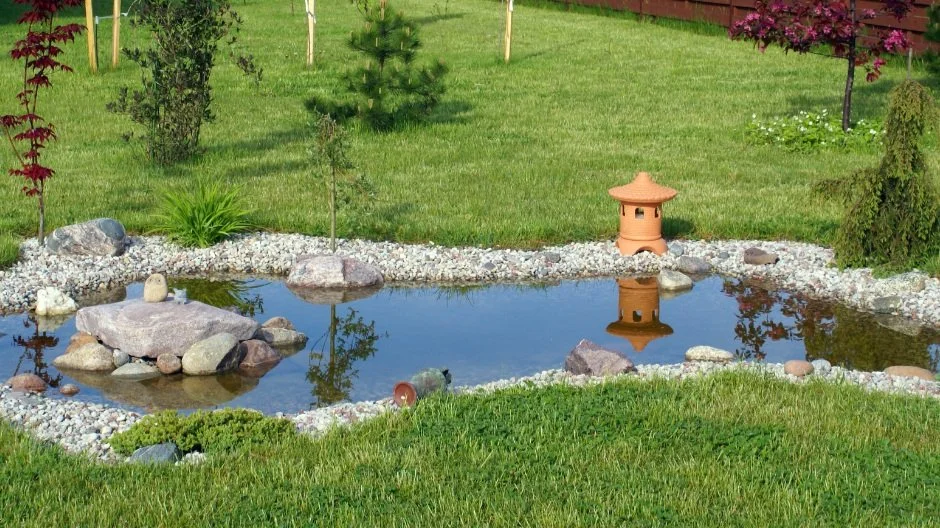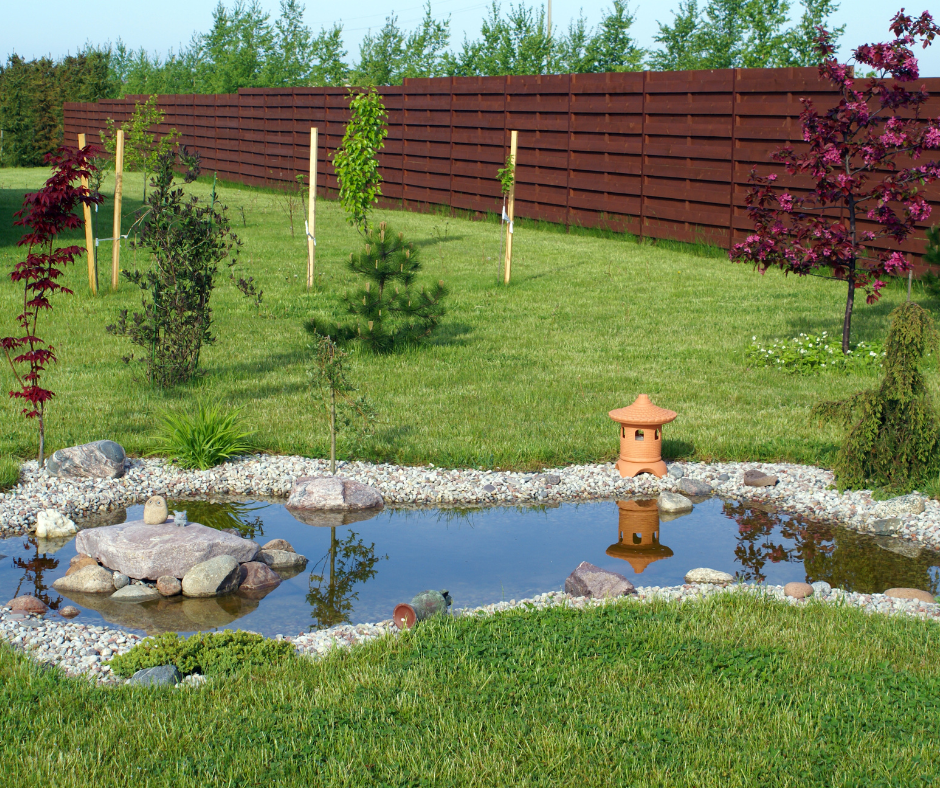Frogs may be small creatures, but they play a crucial role in maintaining the health of our ecosystem. Unfortunately, their population is declining rapidly due to habitat loss, pollution, and climate change.
As persons who care about the health of our planet and are part of an interspecies community, we must take action to protect our environment. One way we can do this is to create a frog-friendly backyard.
There are many things you can do to create a friendly frog and toad yard. In this article, I will give you step-by-step directions to create amphibian-friendly places, explain the “why”, and provide images of frog garden designs.
What Is A Frogscape?
Think landscape. A frogscape is an area of your yard that is designed with the frog’s needs in mind. This area of your backyard will be an alluring habitat for a frog while providing them with the essentials they need to survive. By frogscaping your yard you will attract frogs and toads.
Why Frogscapes?
Provide viable habitat and make a frog happy
Enjoy listening to frog sounds
Watch them eat annoying insects like mosquitos and flies
Frogs = healthy environment
Frogs are part of nature’s food cycle
What Does a Frog & Toad Habitat Need?
Water
All frogs (including toads) need water to drink and as part of their reproductive cycle. Some species spend more time in the water than others. However, even a small shallow water feature is great for frogs and will serve butterflies and small birds as well.
2. Shelter
Everyone wants a place to feel safe and frogs are no exception! Create cover by providing vegetation. Make a Toad Abode to provide a place to hide during the day.
3. Food
Planting flowers will attract bugs that frogs eat. Garden solar lights will attract insects at night for nocturnal species like the American toad. In addition, having fertile healthy soil will be home to earthworms and other insects.
4. A Place To Raise A Family
If you are able you can put in a frog-friendly pond where frogs can lay their eggs. Check out my examples below!
5. Organic
Frogs are very sensitive to chemicals in the environment. It’s one of the reasons for their population decline. So keep a safe and healthy organic yard for your family and your wildlife friends.
6. Look Don’t Touch
Teach children to quietly watch and not touch the frogs in your backyard. This is for two reasons. First, frog skin is delicate and can be easily damaged. Second, frogs and especially toads can secrete toxins from their skin which can cause painful reactions on your skin. And it goes to be said don’t let pets hunt frogs!
Check out this video where I interview a Master Herpetologist and we talk frogs!
Build A Frog Pond
You can build a backyard water feature or pond that fits your yard. Below are several examples.
For all sizes:
Pick a location that receives part sun and is near a water source for refills
Determine the size that will fit in your location
Outline the shape you will use and dig out the soil
Frogs like still water or slow-moving water. You don’t need a large filtration or aeration system, waterfall, etc. A cute solar fountain works just fine.
Keep this pond fish-free (fish eat frog eggs and tadpoles)
Don’t put the pond in the open. Tuck it into an area with flowers and leafy vegetation
Slope the sides like a slide - make it easy for the frogs to get in and out
Build a Mini- Pond
You may have a small yard or have young children, in which case you don’t want deeper water. You can place a bird bath with a low lip on the ground or make a mini pond.
A mini pond may not be deep enough to support reproduction but it will be a spot that provides water and also food.
Advantages of a Mini Pond
Easy and inexpensive to build
Gives the frogs a wet location to soak and rehydrate
Will encourage insects (frog food)
Disadvantages of a Mini Pond
May not be deep enough for reproduction (no tadpoles)
Will need to be cleaned more often
Will need to add water lost with evaporation
Steps to Build a Mini Pond
You will need:
Gravel
Small rocks
2 - 3 larger rocks
Plants to go around the water feature (see list below)
Choose a container. Plastic storage bins make good small ponds. Something like this from Amazon is 16 3/4" L x 11 7/8" W x 7" H. Holds 16 Qt / 15 L of water.
Outline the bin on the ground and dig a hole about two inches wider and deeper than your bin.
Put one inch of gravel on the bottom of the hole - this is just to add drainage.
Place the bin in the hole. Add a 1-inch layer of gravel at the bottom of the bin. This stabilizes the bin and adds nice hidey places for small insects.
Next place some small stones in the bottom. Make a little pile so there are natural hiding areas.
Place a larger stone at one end to make a shallow area.
Keep in mind that you want to make sure your amphibians can get out once they go into the water. So use your rocks to make a secure dock or platform next to the edge.
Place some gravel and small stones along the outside edge of the bin to add some drainage and then backfill the dirt around it.
Larger Pond 4X 4 and 18 inches deep
This pond uses a liner to mold to a shape you want. You have two choices when choosing a liner.
A plastic liner is flexible and can be molded into any shape you want. They can also be pushed against the sides to have different heights or levels in your pond. Remember when purchasing your pond liner consider the three-dimensional area and volume. You will need the liner to cover the “inside” of your shape.
A good rule of thumb is to make the pond at least 24 inches deep. This will allow frogs to safely brumate at the bottom during the winter. You can read my article on brumation to learn more!
Add Plants
After the pond is dug, install the pond liner and add some rocks and decorative features for aesthetic appeal. Then, fill the pond with water and add plants
Plants Around Your Pond
Planting native vegetation around the pond is important. They provide shade, hiding, places, and food for the frogs and toads.
The following plants are Native to North America, like moist soil, do well in part shade (morning sun and afternoon shade) and generally do well in Zones 3 - 8:
American Beautyberry - small bush, provides shelter berries for birds
Arrowhead - plant for waters edge, provides shelter
Brown Fox Sedge - low clumping sedge does well on the edge of the water
Cardinal Flower - attracts butterflies, insects, and hummingbirds
Eastern Redbud - small tree (think tree frogs) wildlife friendly
False Indigo - makes great dried flower arrangements, attracts insects
Ferns - provide shelter and shade
Garden Phlox - spring blooms, prolific woodland plant
Joe Pye Weed - attracts butterflies and bees, the seeds feed the birds in winter
Marsh Marigold - attracts butterflies and other insects.
Pickeral Weed - blooms late summer
Wild Geranium - beautiful foliage all season, hardy, spring flowers attract insects.
White Water Lily - Grows in water, provides a resting place, attracts insects
In your vegetation area, it’s great to add a leaf pile. Toads especially love to hide under leaves.
Many states offer websites that feature native plants. Grow Native! in Missouri has a fabulous website.
Check out my YouTube Channel!
Make a Toad Abode
You can also provide shelter for frogs such as a Toad Abode. A Toad Abode is just a fun way to make a house for a frog. American Toads love these.
There are several ways to make a frog shelter. Just remember it should not have a bottom. The frogs like to dig in the earth under the shelter.
Use broken clay pots as shelter.
2. Make a shelter with a scrap piece of plywood. This works great near your pond or in a shady area under some vegetation.
Dig a two-inch deep hole with the same dimensions as your wood. On one side of the hole place two rocks that rise above the hole about two inches.
Next lay the board in the hole. One end should fit down in the hole. The other end rests on the two rocks. Cover the plywood with some mulch, leaves or grass clippings.
This makes a fabulous shelter for amphibians!
A Fun Activity For The Kids!
Decline of Frog and Salamander Habitats
In recent years, the decline of frog habitats in the USA has become a major concern. Wetlands, which are essential for the survival of many frog species, have been drained or destroyed for commercial and residential development.
Water pollution from agriculture, industry, and urban runoff has also had a negative impact on frog populations. Climate change is further exacerbating the problem by altering precipitation patterns and causing more frequent and severe weather events.
Without action to protect and restore frog habitat, many species may become extinct, causing a ripple effect throughout the ecological systems that depend on them.
Thank you so much for caring about frogs and toads! Tell me in the comments what you are doing to make your backyard more frog friendly!
Author, Ame Vanorio, is the founder and director of Fox Run EEC. She loves frogs and can often be found sitting near a pond waiting to spot them! You can check out Ame’s books on the My Books page.









Twelve species of frogs make their home in Wisconsin. Frogs need water in which to lay their eggs. As adults, they may live on land, in the water, or even in trees!